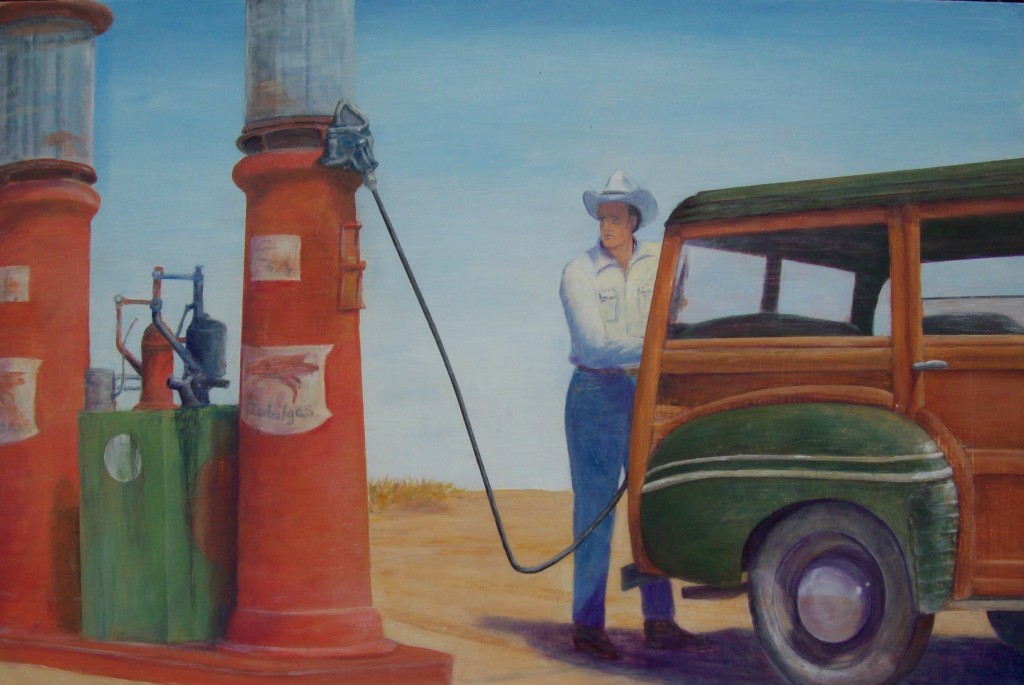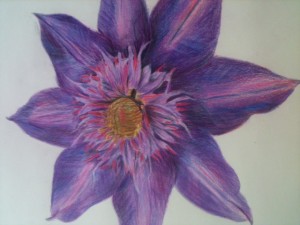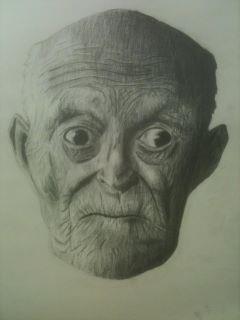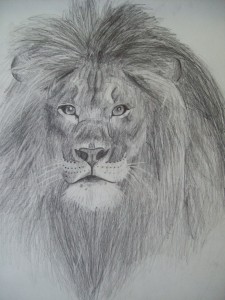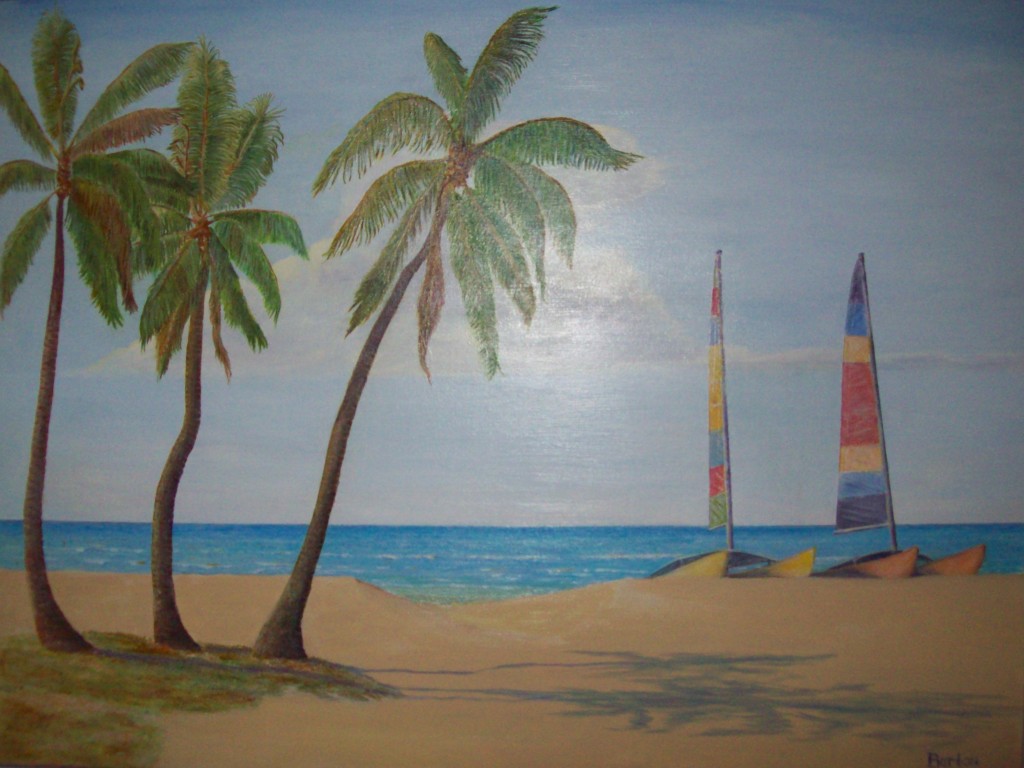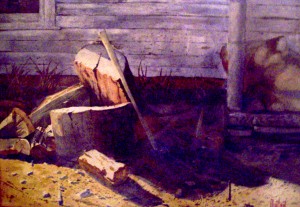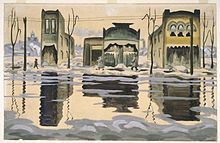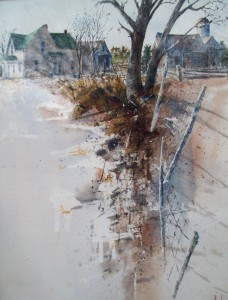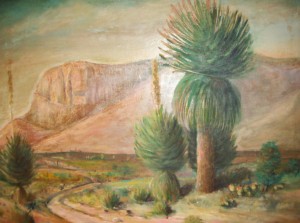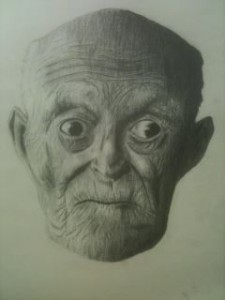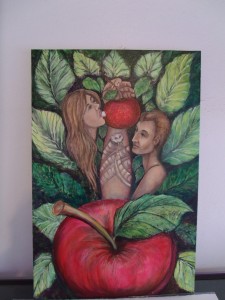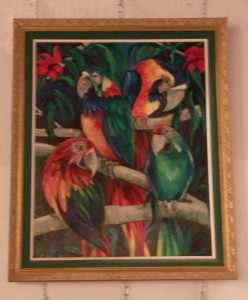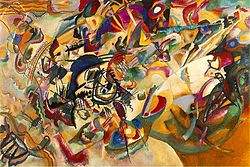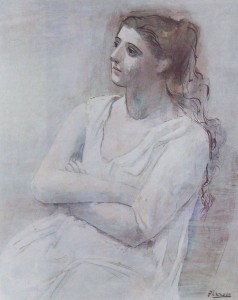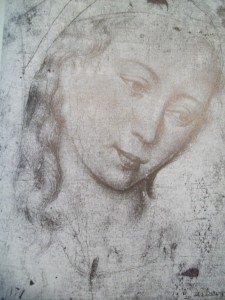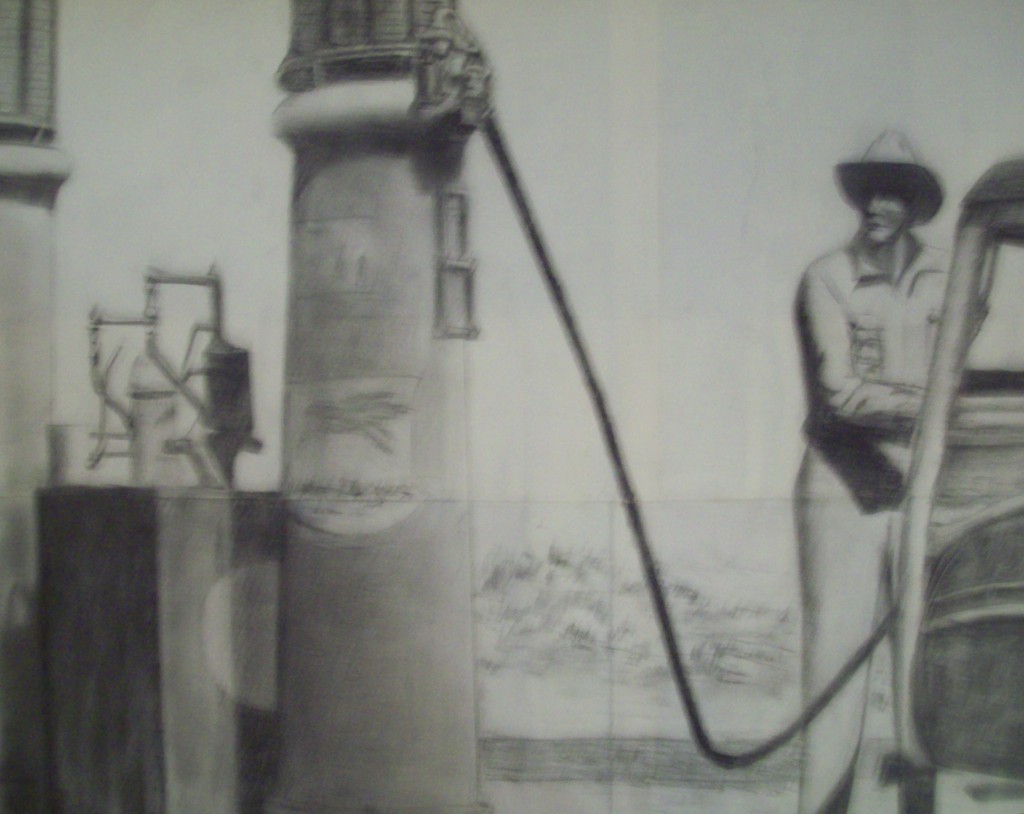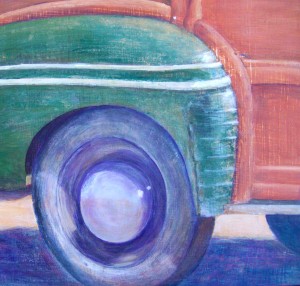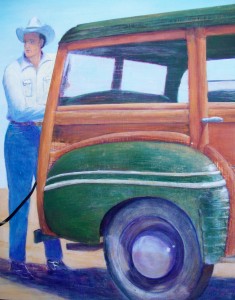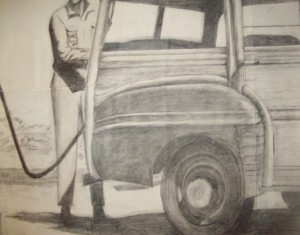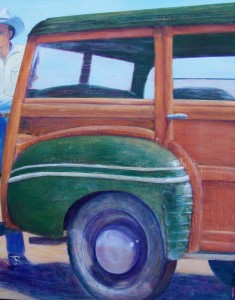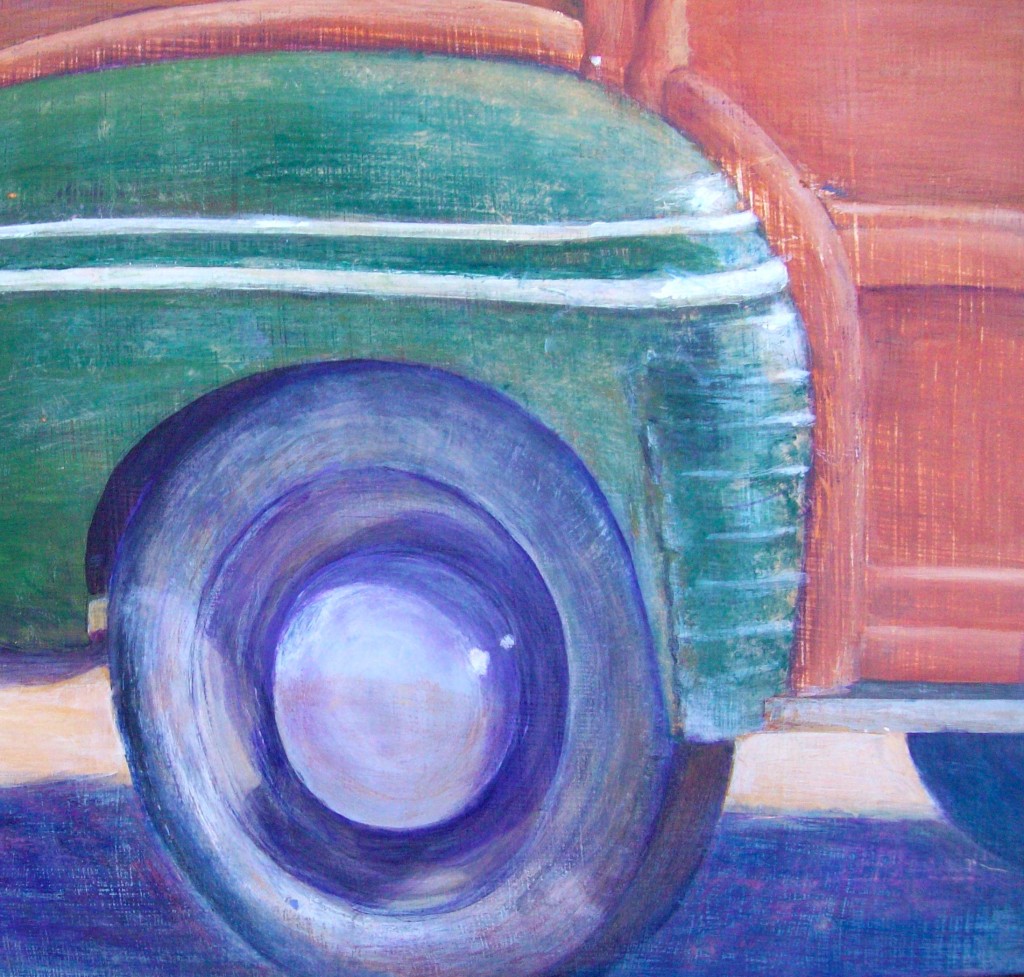It was not Edward Hopper’s painting, Gas, that inspired my painting, The Old Woodie, but it was much of Edward Hopper’s works together that did.
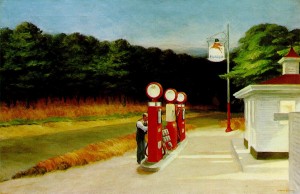
Edward Hopper was an artist in the Realist tradition, painting passionately his interpretation of the American scene.
Because I painted The Old Woodie depicting man at a service station (we called them filling stations in those days), many have noted that it reminds them of an Edward Hopper. However, I don’t think it is the service station that reminds them of an Edward Hopper painting as it is the solitary figure in the painting, or the deserted landscape. These were prevalent in many of Hopper’s works. I am just pleased that anyone would think my painting reminds them of an Edward Hopper painting.
The images that Hopper painted often evoked uncertainty, which was somewhat mystifying. A sense of loneliness tended to prevail while he depicted deserted small towns, desolate images of urban and suburban areas, railroad tracks leading in or out of an industrial area. If the scene was not totally deserted there was a solitary figure or couple in a cafe, empty office, or hotel room. I have Hopper’s famous painting, Nighthawks, as my computer screen savor.
As much as I like the works of Edward Hopper, he was not what inspired my painting, The Old Woodie. It was actually inspired by a small black and white photograph taken back in 1949 or 50. The man filling up the automobile was my father. He was at my uncle’s filling station which was surrounded by southeast New Mexico desert. However, being an enthusiastic follower of Edward Hopper, I immediately saw something in the composition that made me want to paint it.
I’m proud to announce after about four months of trial and error and off and on that I have finished the painting. I will sit on it before varnishing it for a couple of weeks to make sure, but I say finished. Here is the first glance at the finished product. I am not so egotistical that I in any way other than being inspired by Hopper that the painting has anything to do with him.
